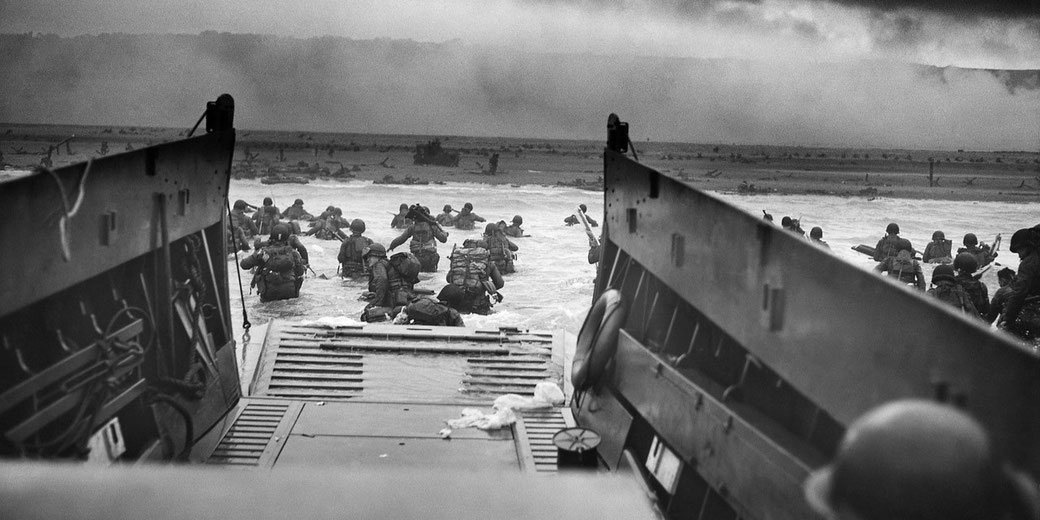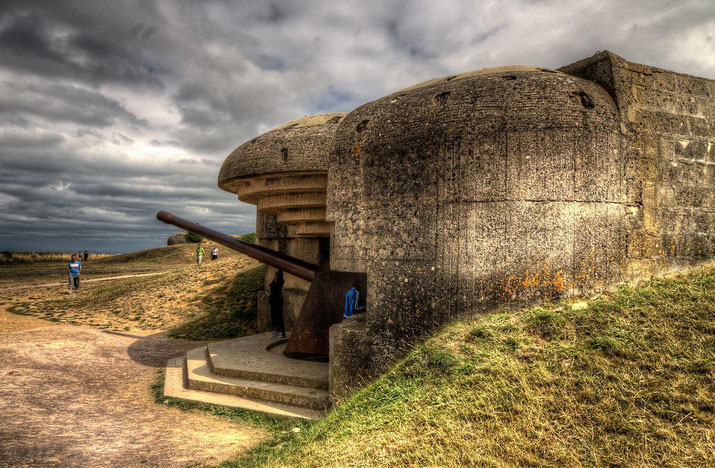From D-Day to V-E Day: The Allies' triumph over Nazi Germany

On May 8th, 1945, the world breathed a collective sigh of relief as Nazi Germany unconditionally surrendered, bringing an end to six harrowing years of conflict in Europe.
For the twelve months before this moment, as Nazi Germany's iron grip began to wane, the Allies embarked on a relentless march towards victory, culminating in the iconic scenes of jubilation on V-E Day.
But what were the pivotal moments that led to this historic victory?
How did the Allies outmaneuver Hitler's war machine?
Background
The war in Europe began on the 1st of September, 1939, when Nazi Germany invaded Poland.
This act of aggression led to the United Kingdom and France declaring war on Germany.
For the next few years, the conflict in the West would focus on the Allies' attempts to push back against German advances.
In June of 1941, however, things changed dramatically when Hitler's forces invaded the Soviet Union.
Now that they were fighting a two-front war, things became much more difficult for the Germans.
Despite some early successes, they were ultimately unable to conquer either Eastern or Western Europe.
The tide began to turn against them after major defeats at Stalingrad and Kursk in 1943.
Landings in Sicily and Italy
The Allied commanders sought ways to prepare for a massive land invasion of Nazi-occupied Europe.
However, Hitler had invested large sums of time and money into fortifying Europe against possible Allied counter attacks.
The British Prime Minister, Winston Churchill, knew that he had to find weaknesses in the German lines of defense and, if possible, feed the Nazi commanders false information about their plans.
To do this, British military intelligence came up with a secret plan known as 'Operation Mincemeat'.
It involved planting false documents on the body of a dead man who was dressed as a British soldier, which led the Germans to believe that an invasion of Sardinia and the Balkans was imminent.
This distracted them from the real Allied plan, which was to invade the island of Sicily.
The Allied landings on Sicily began on July tenth, 1943. They were opposed by Italian and German forces.
Soon after, the Grand Council of Fascism voted a motion of no confidence against Mussolini and King Victor Emmanuel III then had him arrested on July 25, 1943.
The fighting against the Allies was fierce, but they eventually prevailed. On the 8th of September 1943, the Italian government formally announced an armistice with the allied powers.
However, German forces still fought back against Allied advances into Italy. The combined British and American forces fought their way north along the peninsula, facing stiff resistance from the Germans.
However, on September 12, 1943, Benito Mussolini was rescued from imprisonment by elite German paratroopers and Waffen-SS commandos.
Adolf Hitler personally ordered this airborne operation and Mussolini escaped to northern Italy where he continued to command the resistance against the Allied invasion.
At the Battle of Monte Cassino, which took place between 17 January – 18 May 1944, the Allies were bogged down with heavy fighting near a medieval monastery.
Eventually, the Allies had to destroy the monastery and the German defences within it with heavy bombers in order to continue their advance.
After a long and brutal campaign, the Allies finally liberated Rome on the 4th of June 1944.
Aware that Germany and Mussolini still controlled the north, the Allies continued to fight their way towards them.
Mussolini was eventually captured by Italian resistance fighters and executed on April 28th, 1945, which essentially handed the rest of Italy back to the Allies.
The Battle of Normandy
After Sicily, the Allies began planning their next major offensive: an invasion of Nazi-occupied France.
The operation was codenamed 'Overlord'. Churchill and US General, Eisenhower, planned to land troops on the beaches of Normandy, in northern France.
The Germans had assumed an invasion was coming and Hitler had appointed Rommel to create a defensive structure known as the Atlantic Wall.
The Atlantic Wall was a system of bunkers, machine gun posts and barbed wire that stretched along the coast of Europe from Norway to Spain.
The invasion began on the 6th of June 1944, famously known as 'D-Day'. British, American, and Canadian troops landed in a coordinated attack across five separate beaches in Normandy, where were codenamed Utah, Omaha, Gold, Juno, and Sword.
They were transported from south-east England and across the English Channel by the largest invasion fleet in history.
The D-Day landings remain the largest amphibious assault in history. It involved 156,000 soldiers, 11,000 aircraft, and 2000 ships.
The Allied landing force was opposed by German gun emplacements, which were initially caught off guard by the scale of the Allied attack.
Despite high death tolls, the Allies were able to seize control of the beaches, move inland to capture small villages, and eventually establish a foothold in France.
They then fought their way inland, liberating the city of Paris on the 24th of August.
The Fall of Berlin
From there, the British and Americans continued pushing eastwards towards Germany.
In December 1944, Hitler launched a last-ditch effort to turn the tide of the war in Germany's favour.
This came in the form of a massive offensive through the Ardennes forest, which was known as the Battle of the Bulge.
The battle began on December 16th, 1944, and caught the Allies by surprise. The German advance was initially successful, but they were eventually stopped short of their objectives.
This was because the toll of war had made it difficult for the German army to work efficiently anymore.
Supplies of ammunition and food could not reach the men on the frontline easily. Also, the Americans responded quicker than Hitler expected.
Around 90,000 soldiers were rediverted by the US commanders in just over 24 hours. Nazi Germany could not respond with the same speed this late in the war.
The battle lasted until January 25th, 1945, and resulted in heavy casualties on both sides. In the end, it was a decisive Allied victory.
By early 1945 it was clear that the German army was on its last legs. On the 13th of January 1945, Stalin unleashed a major assault against the German army and quickly drove them back.
Despite calls for more men and supplies, the Nazi forces were unable to hold their defensive lines and were forced back.
On the 1st of April, 1945, US forces crossed the River Rhine and entered Nazi Germany. They were soon joined by British, and Canadian troops.
On the eastern front, Soviet armies were also driving the Germans back into Germany.
The Allies continued to push forward, and on April twenty-fifth they reached the city of Berlin.
On April 30th, 1945, the same day as Soviet soldiers had captured the Reichstag, Hitler committed suicide rather than be captured by the Allies.
This effectively ended Nazi rule in Germany. On May seventh, the Allied commanders accepted Germany's surrender, which meant that the war in Europe finally came to an end on May eighth, 1945 - Victory in Europe Day (V-E Day).
Consequences
The aftermath of World War Two was felt for many years after the conflict had ended.
Europe itself had suffered widespread destruction by six years of fighting. Millions were dead, and even more were displaced.
The war also led to major changes in European politics and society. In the decades that followed, the world would see the rise of the Cold War, as well as the eventual fall of communism.
The events of World War Two would also have a profound impact on the way we view conflict and warfare.
Looking back, it's hard to overstate the importance of World War Two. It was a conflict that changed the world forever, and its effects are still being felt today.
Further reading
What do you need help with?
Download ready-to-use digital learning resources
Copyright © History Skills 2014-2024.
Contact via email
With the exception of links to external sites, some historical sources and extracts from specific publications, all content on this website is copyrighted by History Skills. This content may not be copied, republished or redistributed without written permission from the website creator. Please use the Contact page to obtain relevant permission.






